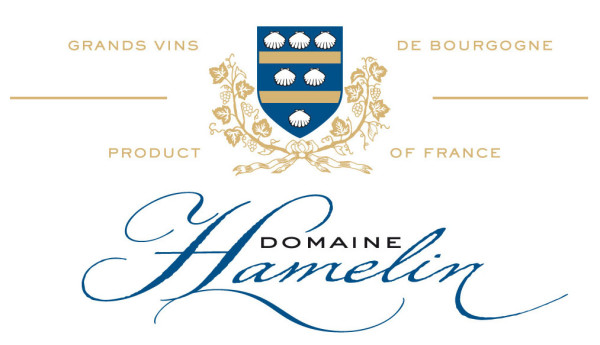
The Estate
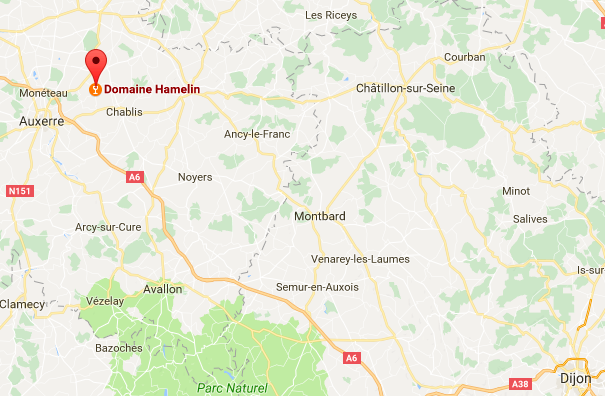
For 7 generations, the Hamelin family has been making wine – from the 1840s when Gustave Hamelin purchased 2 hectares of vines and a mule to work the land, to today where Thierry Hamelin and his son Charles cultivate over 36 hectares of vines stretched out over 3 villages. The knowledge handed down from generation to generation is a harmonious mix of old traditions and modern-day techniques. Their focus is to craft generous and elegant wines that are a pure expression of the terroir. In order to achieve this goal, a well-controlled and thermo-regulated winemaking process is essential. They bottle all of their wine in-house at the optimal moment, at which point the wine is at its most expressive.
The Terroir
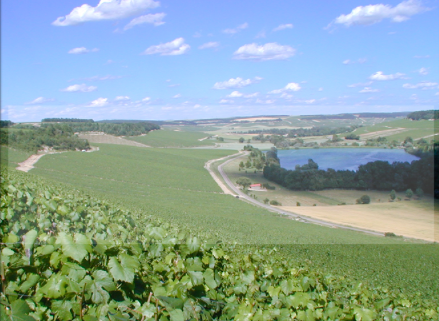 The Domaine HAMELIN harvests grapes from an area of 36.70 hectares. These vines extend over three villages: Poinchy, Beines and Lignorelles. The head office and the vat room are located at Lignorelles. The Domaine production comprises four White Burgundy wines:
The Domaine HAMELIN harvests grapes from an area of 36.70 hectares. These vines extend over three villages: Poinchy, Beines and Lignorelles. The head office and the vat room are located at Lignorelles. The Domaine production comprises four White Burgundy wines:
Petit Chablis (A.O.C.)
A total area of 9.95 hectares grown around the village of Lignorelles, on the edge of the Chablis vineyards. The soil is clay and limestone and the average annual production is 580 hl.
Chablis (A.O.C.)
A total area of 19.4 hectares, grown in the three villages mentioned above. Among these vines, in the designated Chablis area, there are still some old vines (1 ha) of 70 years and over. If the year so allows, a special wine is made from these older vines, called the Chablis “Vieilles Vignes”. The subsoil is generally limestone (Portlandian). The average annual production is 1125 hl.
Chablis 1er Cru “Beauroy” (A.O.C.)
A total area of 3.9 hectares, located on south-facing slopes, opposite the Lac de Beines. The average annual production is 210 hl.
Chablis 1er Cru “Vau-Ligneau” (A.O.C.)
A total area of 3.5 hectares, located in the village of Beines. This vine is grown in the Vallée de Vaux de Long. It extends over a steep, 200-metre slope. The average annual production is 200 hl. These subsoils include a limestone called Kimmeridgien that gives the elegance and the body of a ‘premier cru’.
-The Domaine has 10 permanent employees.
-The grapes are harvested manually (10 %) and mechanically.
-The total annual harvest of the Domaine is 2100 hl.
-The wines are aged in tanks before being bottled.
-80 % of the harvest is bottled (around 270,000 bottles).
As well as having a single Chardonnay grape variety, our vineyards are planted on soil that is 150 million years old, from the Jurrasic, or to be exact, the Kimméridgien, era. During this period, Burgundy was under the sea, which has left us a number of remains to be found in the rock, such as small oysters and ammonites. The fundamental characteristic of Chablis depends on its soil, or ‘terroir’, that gives it the typical minerality that cannot be found anywhere else. The dry, clear, aromatic, lively and light nature of Chablis, which no other Chardonnay wine can match, is due to the link uniting the grape variety to its soil.
Hamelin's expertise
Even though the nature of the soil is the key element of the 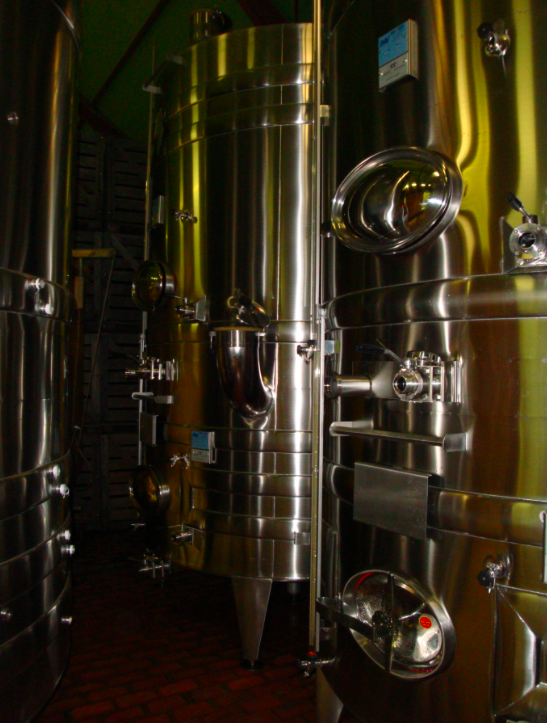 ‘terroir’, many other natural factors influence the quality, typicity and expression of a wine, such as the direction which the vine plots are facing, the altitude, the depth, the climatic conditions of the year and the micro climate. Finally, the role of man is a determining factor in wine production; in the vineyard, as regards the choice and implementation of growing methods – from pruning to harvesting – and in the cellar, as regards the wine-making process and aging.
‘terroir’, many other natural factors influence the quality, typicity and expression of a wine, such as the direction which the vine plots are facing, the altitude, the depth, the climatic conditions of the year and the micro climate. Finally, the role of man is a determining factor in wine production; in the vineyard, as regards the choice and implementation of growing methods – from pruning to harvesting – and in the cellar, as regards the wine-making process and aging.
For this reason, we pay close attention to our vines. We work in a way that respects the environment, using integrated pest control. This means that we use as few treatment products as possible and we choose those that are least harmful to the neighbouring fauna. We now give a higher priority to working the soil.
For a number of years, we have been testing cover planting and today, a third of our vineyard is no longer grass-free. We use inter-vine hoes and ploughs to control vegetation. We have noticed that these vines have a higher biomass and more varied fauna. As regards the wine-making process, the must runs by gravity from the presses to the vats, ensuring ideal quality. Our vat room is thermo-regulated, giving us total control over the vinification and enabling us to age the wine in the best possible conditions. We carry out the bottling ourselves at the optimal moment, during which the wine is at its most expressive.

Petit Chablis
Production Area: 9.95 hectares grown around the village of Lignorelles, on the edge of the Chablis vineyards
Soil: Clay and limestone
Annual Production: 580 hl
Grape Varieties: 100% Chardonnay
Vinification: Traditional vinification in thermo regulated vats. Maturation in vats can last more than 9 months and then is followed by a collage and filtration.
Tasting Notes: Color: vivid, light gold yellow, with a slight hint of green. Nose: expressive, white flowers tending towards iodine. Palate: rounded with a touch of minerality, soft with good length of finish
Serving Suggestion: It can be drunk at any time of the day, particularly as an aperitif or with lunch. It is a perfect match for ‘charcuterie’ pâtés and deli meats, as well as a number of cooked dishes. Serve at between 10 and 12°C.
Cellaring Potential: Will keep 2 to 5 years.

Chablis
Production Area: 19.4 hectares in the Lignorelles and Beines districts
Soil: The subsoil is generally chalky limestone (Portlandian)
Annual Production: 1,125 hl
Grape Varieties: 100% Chardonnay
Vinification: Traditional vinification in thermo-regulated vats. Maturation in vats can last more than 9 months and then is followed by a collage and filtration.
Tasting Notes: Vivid yellow color with a hint of green. The bouquet is discreet with a touch of hawthorn blossom and freshness. On the palate, it is round, fresh, and mineral. Good length and a powerful finish.
Serving Suggestion: The Chablis is served chilled (12-14°C) with oysters, seafood, charcuterie pâtés and deli meats, pork dishes or snails. It also goes well with goats’ cheeses and gruyere cheese.
Cellaring Potential: Will keep 5 to 8 years.

Chablis Vieilles Vignes
Average Age of the Vines: 70+ years old
Soil: Largely limestone (Portlandian) soil.
Grape Varieties: 100% Chardonnay
Vinification: Traditional vinification in thermo-regulated vats. Maturation in vats can last more than 9 months and then is followed by a collage and filtration.
Tasting Notes: Color: golden yellow with a slight hint of green, vivid. Nose: iodized and floral (white springtime wild flowers) Palate: round and mineral with a touch of spice, or even pepper. It has a good, fully unctuous finish.
Serving Suggestion: The Chablis Vieilles Vignes can be served with a 4 o’clock tea and biscuits, as an aperitif or with the meal, accompanying subtle dishes, such as langoustine or fish quenelles.

Chablis 1er Cru Beauroy
Production Area: 3.9 hectares, located on south-facing slopes, opposite the Lac de Beines
Annual Production: 210 hl
The Vines: This wine is produced from vines located on very steep south-facing slopes (30-40% incline), that were planted between 1980 and 1982. They extend from the bottom of the valley to the top of the slopes.
Soil: Kimmeridgien subsoil
Grape Varieties: 100% Chardonnay
Vinification: Traditional vinification in thermo-regulated vats. This wine is aged for 12-18 months in stainless steel vats before bottling.
Tasting Notes: Vivid golden color with a hint of green. Fragrant with notes of white flowers such as acacia and hawthorn. Round, expressive, and unctuous on the palate with a fine minerality. Powerful and rich.
Serving Suggestion: This wine may be drunk quite young as it has plenty of richness and fruit, but its zesty acidity make it a good choice for wine collectors interested in older and exceptional wines. The Chablis 1er Cru Beauroy pairs perfectly with lighter fishes and seafood as well as poultry and various cheeses.

Chablis 1er Cru Vau Ligneau
Terroir: The Chablis 1er Cru Vau Ligneau is located in the Beine district. The vines grow in the Vaux de Long valley and extend over a steep slope (30-50% gradient) about 200 meters long. At the top of the valley, the Kimmeridgian subsoil rubs shoulders with the Portlandian soils.
Production Area: 3.5 hectares
First Planting: 1978 and 1980
Tasting Notes: Pale yellow color with hints of green. The nose is powerful with elegant mineral and floral notes. On the palate, it is complex, round, and rich with a beautiful structure and finish.
Serving Suggestion: Serve at 12-14°C, paired with fish, veal, etc.
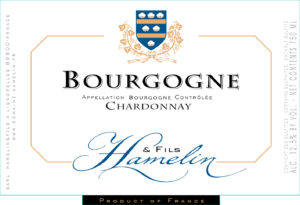
Bourgogne Chardonnay
Soil: Clay-limestone
Grape Varieties: 100% Chardonnay
Average Age of the Vines: 35 years old
Average Yield: 60 hl/ha
Vinification: The grapes are harvested at peak ripeness. After sorting and pressing, 100% of vinification takes place in stainless-steel vats.
Tasting Notes: Light golden color. On the nose, this wine has delicate notes of orange marmalade and white flowers, supplemented by a light minerality. Soft and round on the palate with a juicy acidity; notes of golden delicious apple, apricot, and citrus. Nice tension on the finish.
Food Pairings: It pairs perfectly with aged cheeses, shellfish, and cold cuts.
Alcohol: 12.5%
Serving Suggestion: 11-12°C


